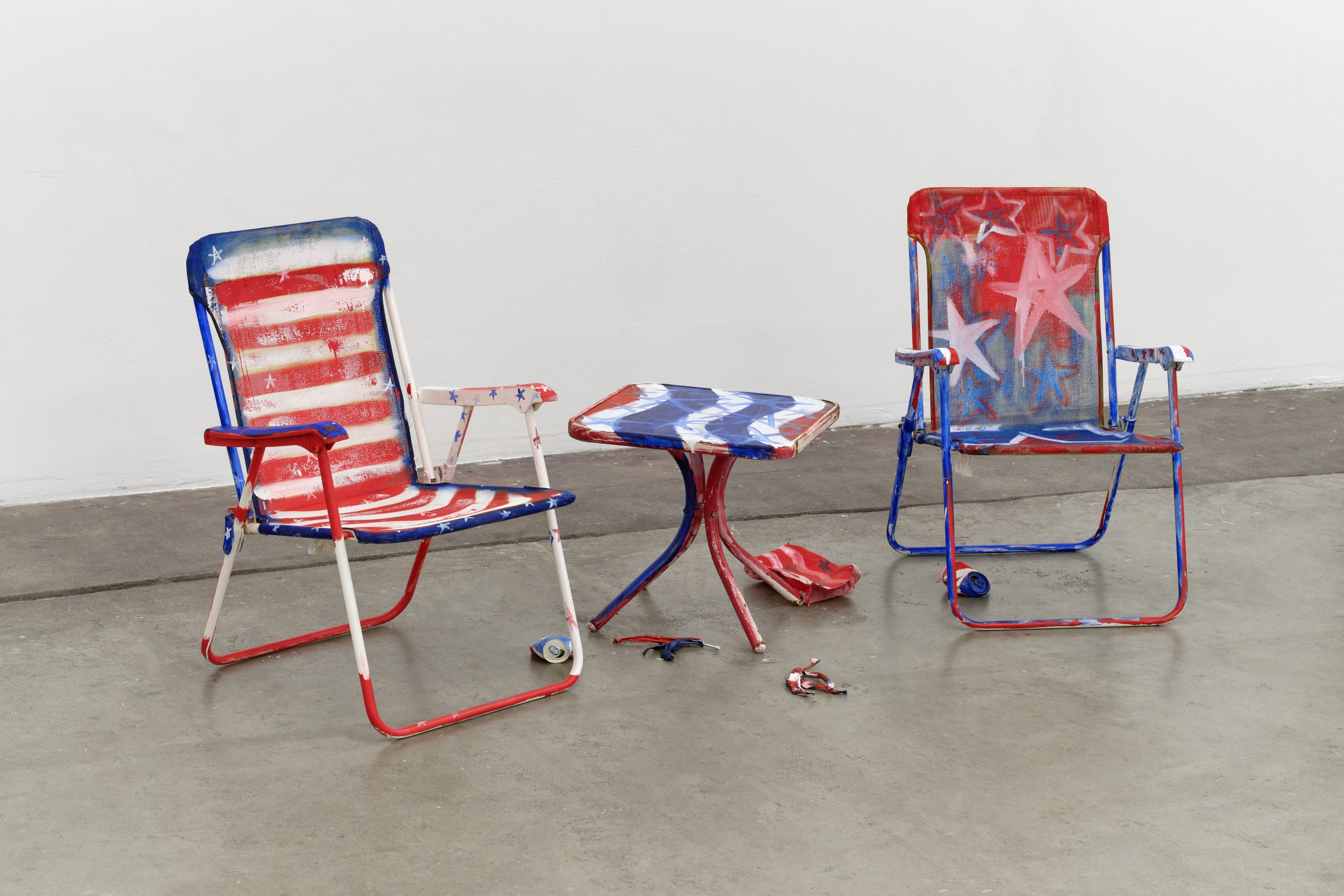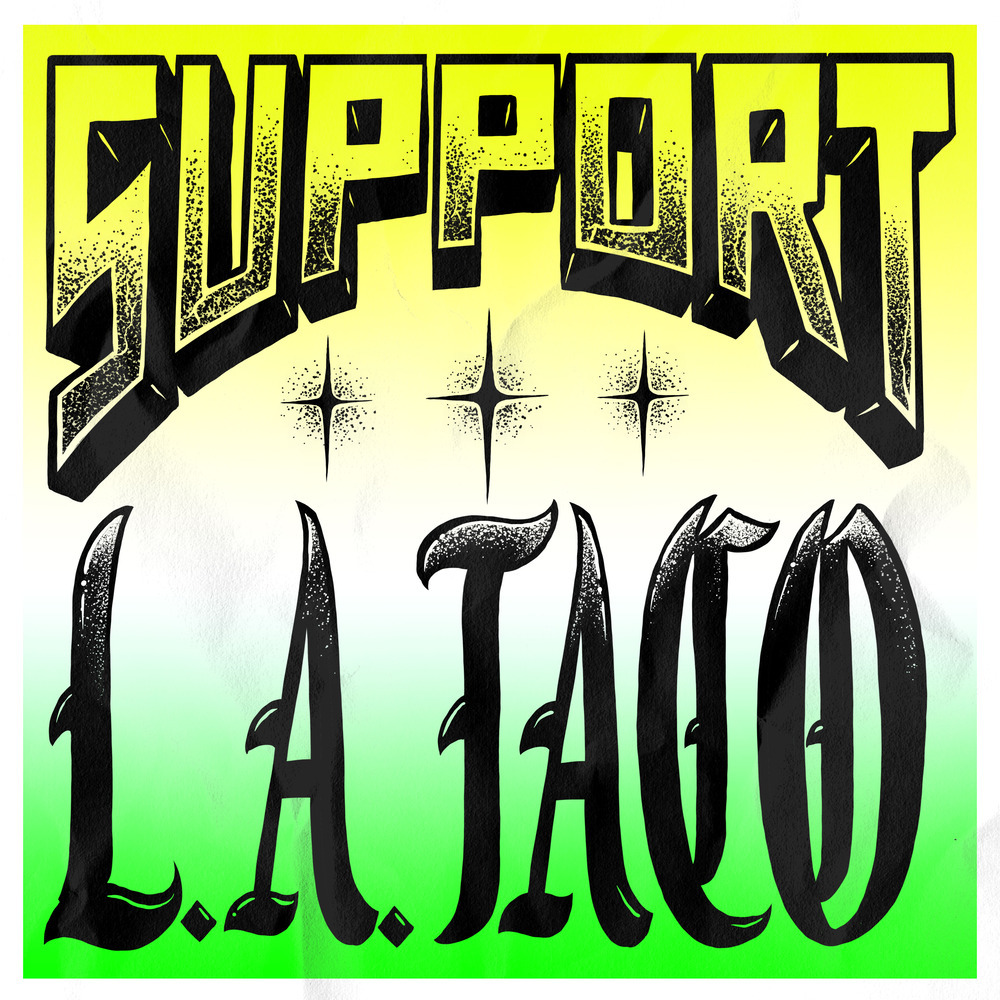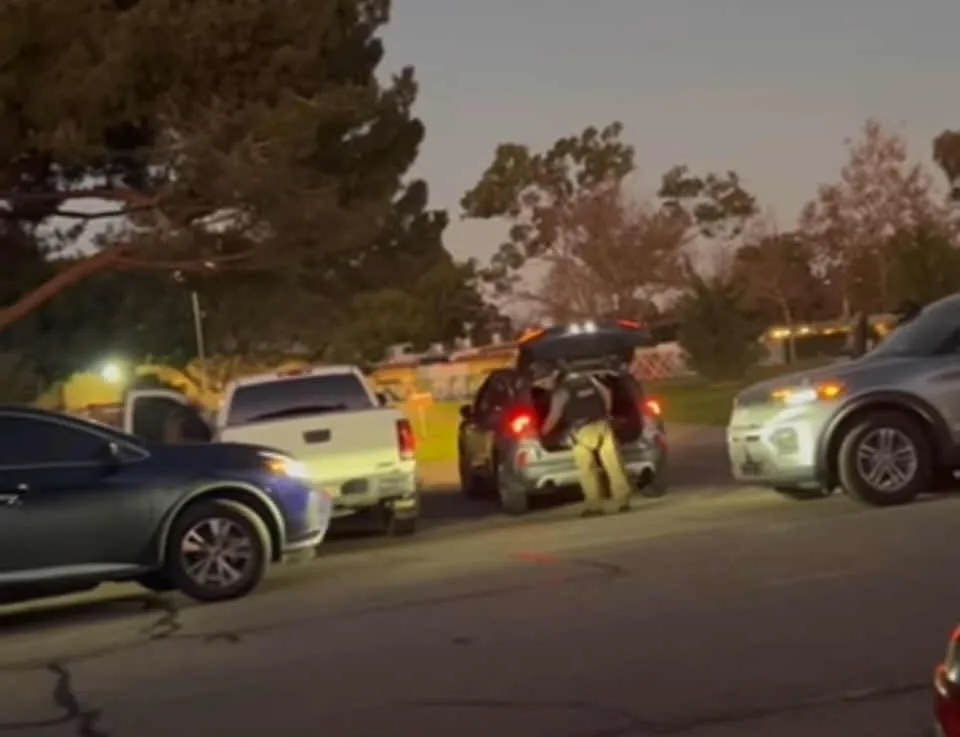There’s a new taco cart in town. It has the style of a classic, cherry-red 1950s Cadillac and the capacity to serve some of your favorite street foods legally.
Behind L.A.’s newest legal taco cart is Revolution Carts, which, true to its name, is trying to change the game for street vendors.
Last week, its founder, Richard Gómez, the engineer behind the new grill-equipped cart, confirmed with L.A. TACO that the health department had approved the latest addition to the company's cart catalog.
“We’re introducing our new grill cart, and we’re hoping that this becomes a solution to help out all the people selling tacos and other foods,” he said while giving L.A. TACO a first look at the newly wrapped cart—the first edition of its kind. “Pupusas, bacon hot dogs, smash burgers, pancakes. This incorporates everything that we couldn’t do with the tamal cart.”
Gómez said the taco cart was the first design they wanted to work on in 2018. However, the timing and restrictions that the health department and city had placed on taco carts were too strict, pushing the company to pivot to a smaller cart that eventually debuted as the first legal tamal cart in L.A.
Ironically, because of outdated laws, the tamal cart faced more challenges than the latest cart before it was street-ready.
At the time, their team, street vendor communities, and organizations were still fighting for the passage of SB972, which would not pass until a year after the tamal cart was approved. The engineer said the passage of SB972 allowed them to streamline the process this time around.
“The challenges that we faced with this one were more about satisfying the vendors vs. the health department,” Gómez explained, saying they understood the department's needs much more than when they first started. “We wanted to make sure that it’s going to be a cart that will be useful for (the vendors).”
The cart is a compact kitchen on the go, representing the pushcart's evolution and the art of selling food on the streets.
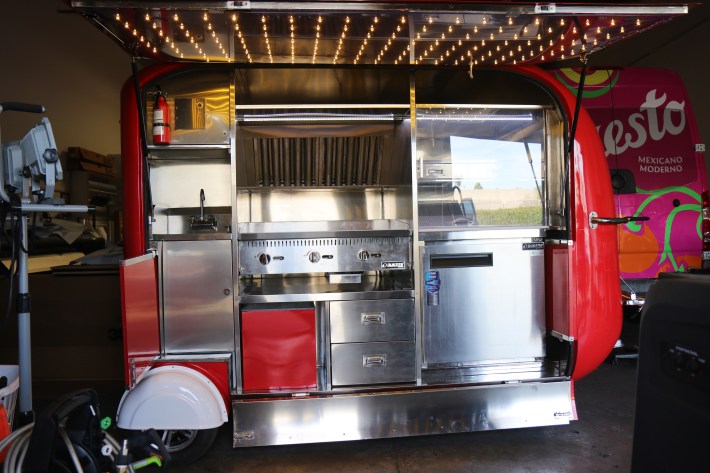
While the beginning of street vending in Los Angeles cannot be pinpointed to one particular date, the first documentation of street food and public mentions of push carts can be traced back to the late 1800s.
At the time, it was said that the majority of people selling food on the streets were primarily Mexican and Chinese immigrants who sold tamales and other traditional, on-the-go foods out of pushcarts and wagons.
Since then, L.A. has seen street vendors evolve the push cart with innovative ideas such as building carts out of golf carts, attaching an electric scooter or bike to a push cart, and even altering a cart’s wheels to maneuver easily along L.A.’s beaches.
While these attachments and alterations seem minor to some, each development serves a purpose. The goal is usually to make things easier and, at times, safer for the vendor. For instance, adding a bike to a cart means fewer hours of standing or walking, while umbrellas provide shade, and lights provide safety for vendors and their customers.
Gómez, a former street vendor, considered the same factors when designing what looks like a food truck and taco cart hybrid with his team.
“This was about finding a balance between what street vendors want, what the people who consume the food want, and what the health department requires,” he repeated.
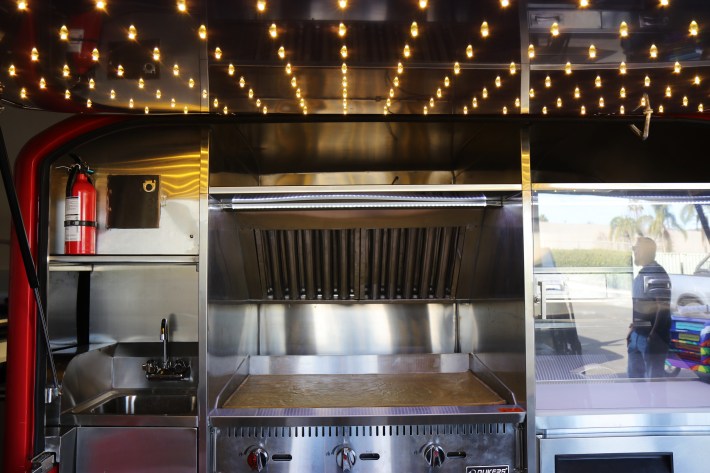
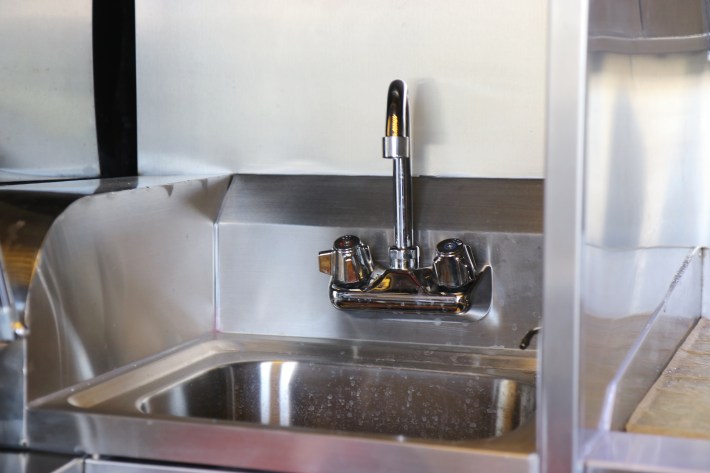

The grill cart is made of reinforced fiberglass, sits on a durable steel frame, and is fire-resistant.
It has a built-in 36-inch griddle, stainless steel commercial cooking and refrigeration equipment, storage for other food items, and storage that keeps two five-gallon propane neatly out of sight.
It also includes one of the biggest requests from the health department: a hand washing station, complete with cold water, and a soap and paper towel dispenser. It's also easy to put away.
However, he can’t deny that these carts slightly alter how people are used to seeing street vendors operate, such as vendors who cook over mesquite and open flames and those with a sizzling, large, and perfectly charred trompo of pastor in full rotation. He admits that, while not impossible, getting something like that approved is a lot harder. Still, Revolution Carts tried to keep as many traditional elements as possible.
The cart is easy to push, can be locked in place, and has built-in lights to illuminate it when cooking at night, just like a taco stand. The griddle is open and not enclosed like a food truck is, so you can still see the cook making your food. It also includes built-in drawers to separate dirty utensils from clean ones, a requirement from the Health Department.
According to Gómez, the cart can also store ingredients for up to 100 to 200 orders, which is consistent with what street vendors tell him they are selling these days.
“It was very important to keep the authenticity of how taqueros are working, where you can actually see them grilling their meat and prepping that taco for you,” Gómez said, while showing us the plancha (griddle) with three burners. “So it's very important that we mimic what taqueros are doing on the street right now to the extent that we can, where the health department can still be okay with it.”
“So it's kinda running that thin line of what the health department will approve and what really represents a taquería on the street,” he said.
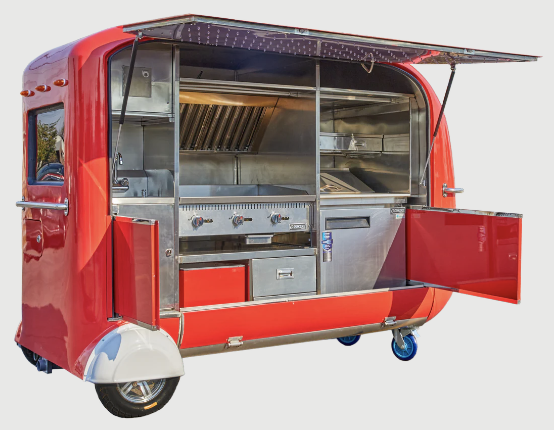
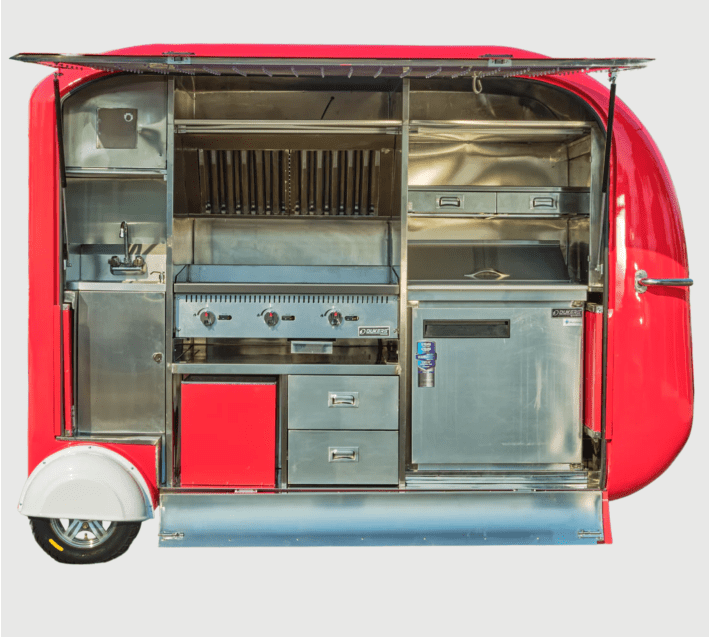
However, style and authenticity are not the only considerations when designing such a cart; the engineer also considered its durability against a potential attack.
“We have seen how some of these carts get easily pushed over by people, so we wanted to make sure that it wouldn't be as easy to tilt one of these carts,” said Gómez, referring to vendors who have been targeted or randomly attacked in the past.
Another challenge they faced was ensuring the cart was functional for more than just tacos. Both Gómez and his business partner and friend, Matt Geller, have long expressed that their main goal is to help vendors who are having difficulty getting a health department permit, which, as previously reported by L.A. TACO, has proven challenging.
“We got them approved on a template approval. What that means is that you, the vendor, don’t have to go through the entire process we went through,” he explained. “They can modify the template to their food operation. And we personally walk them through the Health Department application, and in some cases, we have been able to get vendors approved within hours.”
The Los Angeles County Department of Public Health confirmed with L.A. TACO that while other grill carts are approved, this cart is the first of its kind.
“There are many approved grill carts currently operating within Los Angeles County, however, this is the first moderate risk Compact Mobile Food Operation (CMFO) grill cart approved for limited food preparation using cooked meats designed to operate from a sidewalk or pedestrian pathway that was approved by Los Angeles County Public Health.”
The department stated that the difference between this cart and the standard cart that has been approved in the past is its mobility, which allows it to be moved around a sidewalk easily, unlike the traditional stand-still carts.
When asked about how the department felt about the design, they said:
“Public Health is always supportive of new, innovative food cart designs that comply with food safety requirements and provide opportunities for vendors to offer a safe product to the consumer.”
The cart will cost $19,500, and Revolution Carts is working with a finance company to help vendors who need help paying for it. And like with their tamal cart, they are also looking for sponsors or companies that can donate or gift carts to vendors.
“I'm very proud of what we came up with, and I’m looking forward to seeing it in the streets and hopefully changing people's lives,” said Gómez. “This is the beginning of someone's American dream. This can be the next big chain of restaurants.”
Gómez hopes the new grill cart will bring success to vendors, as it has brought success to those who have grown their businesses after getting a tamal cart, like At Bevs’ tamales and Tamales El Primo, a vendor who was harassed while selling tamales in San Pedro in 2022.
El Primo's owner was gifted a custom cart that was eventually displayed in an exhibit at the Cheech Marin Center for Chicano Art & Culture Museum in Riverside, before being proudly put to use by the vendor.
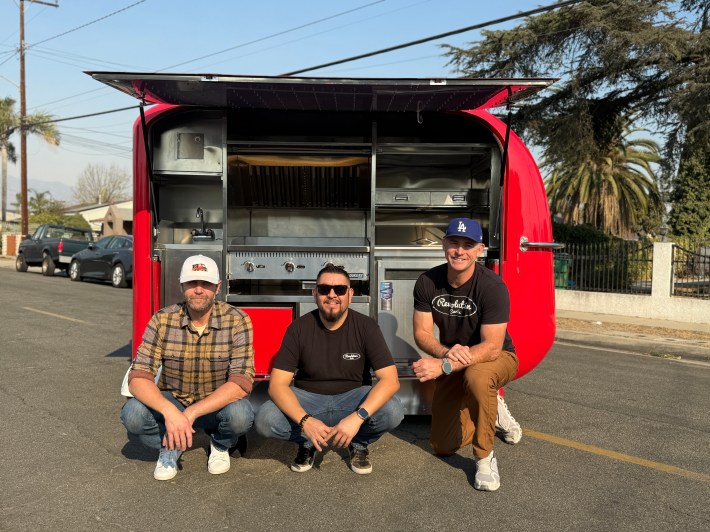

Currently, the company has 100 tamal carts in operation, half of which were given away.
While the number may seem small for some, it's still a massive boon once you consider how hard it is to get a permit for a cart approved. It is so hard that the city's Bureau of Street Services reported that L.A. County has only issued 53 vending permits to vendors selling food as of September 2024. The report pushed the county to seek proposals for the designing and manufacturing of food carts to support the county’s Sidewalk Vending Program.
The Department of Economic Opportunity (DEO) is planning to purchase at least 180 food vending carts, including integrated grill carts like Gómez’s, plus prepackaged food carts and fruit carts, approved by the Department of Public Health. These carts will be given to street vendors at no cost. Gómez said he hopes Revolution Carts will be among the manufacturers selected for the program.
Beyond creating and selling carts accessible to micro-entrepreneurs, the company has actively sought safe spaces for vendors to sell at. They have worked with night markets, Home Depot, and other spaces, providing permanent and secure vendor locations.
When asked if he had vendors that were already interested in the cart, Gomez said, “Yes, there are vendors already in line for these carts. Some are trying to do tortas ahogadas and breakfast burritos.”
Gómez said he consulted on his design with vendors selling tacos, pupusas, and hot dogs to see what they would want in their dream cart.
“And the result was this,” he said.
Gómez said they will use this initial grill cart and have people try it before more are produced. However, those interested in the cart can already pre-order their carts online.
While anyone can purchase the carts, Gómez and Geller have prioritized helping the street vendors who need them most.
“This has always been, not just about getting vendors great carts that are permitted, but also about finding them great opportunities and stability,” said Geller.
Editor’s note: This article was updated on 2/11/2025 to include a statement from The Los Angeles County Department of Public Health.


